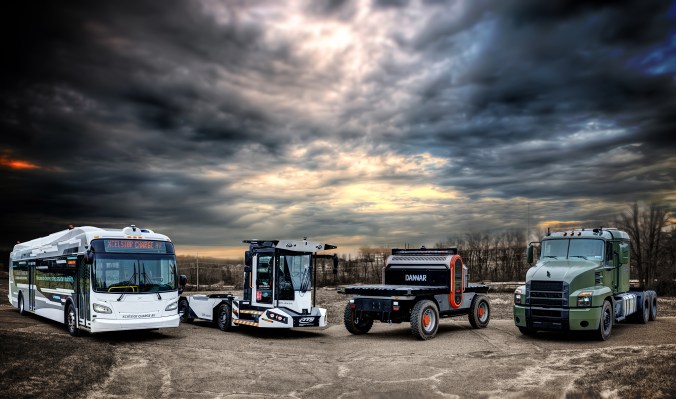Robotic Research, a self-driving technology company that has spent the last two decades developing on and off-road autonomous vehicles for the Department of Defense, raised a $228 million Series A round. The company will use the investment, which was led by SoftBank Vision Fund 2 and Enlightenment Capital, to build out the commercial side of its business.
Crescent Cove Advisors, Henry Crown and Company and Luminar, a lidar company, also participated in the investment.
RR.AI, as the company has branded its commercial arm, currently has its vehicle-agnostic autonomy kits, called AutoDrive, in about 150 heavy-duty transit buses, Class 8 trucks and yard trucks operating on roads across the United States, Canada, Australia, Europe and Saudi Arabia, according to Alberto Lacaze, CEO of Robotic Research. Now, it’s just a matter of scaling.
Robotic Research has historically automated trucks for the U.S. Army and Navy, operating in areas that aren’t mapped and don’t have GPS, good communications or lined roads. The company’s autonomy stack also adds sensors that commercial autonomous vehicles usually don’t use, such as stereo and structure for motion, a range imaging technique for estimating 3D structures from 2D image sequences, says Lacaze. As a result, RR thinks it has a leg up on competition that’s still afraid to operate self-driving trucks on roads with inclement weather.
“Most people think robotics is some magic piece of software,” Lacaze told TechCrunch. “The reality is that robotics is more like a stamp collection. You have to collect all these different edge cases where you need to be able to run on slippery roads and with dust and without being able to see the lines and so forth. We have collected lots and lots of stamps. To a certain degree, a common day for a military application is the edge case for a commercial application.”
RR.AI has already deployed its technology broadly, so this funding is specifically geared toward expanding and industrializing commercial applications, says Lacaze.
Last year, Robotic Research won a contract with the Connecticut Department of Transportation that would see three 40-foot electric buses automated and running on the CTfastrak corridor. The plan would be to scale that to an automated bus rapid transit line, bus platooning and precision docking. The buses operate at Level 4 capabilities, says Lacaze, but they will have human operators on board for safety. (SAE defines Level 4 autonomy as a system that does not require a human to intervene but can only operate under specific conditions.)
On the trucking side, RR.AI is working with sawmills in Canada to move logs, and says it will have a big U.S.-related announcement coming soon. The company will also be announcing an agriculture partnership in the coming months.
RR.AI’s go-to-market strategy is to focus on the “low-hanging fruits,” says Lacaze, or the areas where there are few regulations or easy regulations to work around.
“We’re very interested in working in areas where we can produce with the sensors at the cost they are now, and where we can generate profit,” said Lacaze, noting that sensors needed for self-driving operations like cameras, lidar and radar are still very expensive, so it makes sense to put them on larger, heavy-duty, longer-lasting vehicles so the cost of the sensors can amortize over time.
“We are probably the only company in autonomy that has been profitable since inception. And the reason we were able to do that is we have concentrated on smaller markets but in the meantime, they have provided revenue right now. We don’t have to wait until 2025 to deploy trucks, and that allows us to grow faster and collect miles faster.”
Operating in robotaxis in the future is not out of the question for RR.AI, says Lacaze. The company’s strategy is to wait for the regulatory environment to improve and the cost of sensors to decrease before pivoting into new verticals. But as RR.AI attempts to scale in its comfort industries, it might find that there simply aren’t enough vehicles on the market to work with.
“We are kind of dependent on the vehicle manufacturers to produce since we don’t produce our own vehicles,” said Lacaze. “We are very carefully turning every stone over to find vehicles that are available in areas where it makes sense from a regulatory standpoint to deploy right now.”
